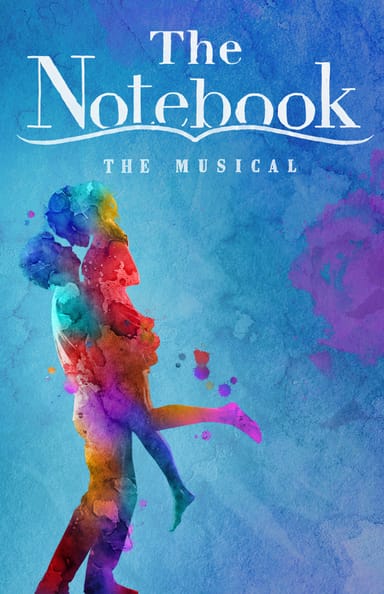As Broadway prepares to reopen, industry members are hoping it will not return to its usual mode of operation.
While more than 20 productions have announced plans to return to Broadway this year, few have released equity and inclusion standards or comprehensive safety protocols for the workplace. And so, after months of calls for change within the theater industry, members of the community are shaping their own policies.
André Jordan, a cast member of “Diana,” helped organize his cast and crew members last summer as they prepared for the Netflix capture of the musical and the production’s return to Broadway.
After presenting a list of demands on equity and safety to the producers, many of their concerns were addressed. For one, costume designer William Ivey Long was not present during the Netflix filming process and will not work on the Broadway reopening of “Diana,” the production confirmed Friday. His costume designs will continue to be used in the show.
Cast members had expressed discomfort working with Long, given the allegations of sexual harassment that have been made against him. Long did not respond to a request for comment.
The company also expressed concerns over the staging of the musical, which featured scenes with Black cast members standing in the background as nonspeaking servants, lending some the feeling of being used as props, Jordan said. The staging was then reconfigured, as the show was readied for filming and its eventual live production.
Their action was spurred by the killing of George Floyd, which occurred days before the start of their June workshop, and calls for change surrounding his death.
Around that time, the entire cast, creative team, management and the producing team, which is led by Beth Williams, Frank Marshall and the Araca Group, attended an unconscious bias seminar. This unified the departments, Jordan said, and also provided a point person, in the unconscious bias trainer, for cast members if issues arose.
“Together we have cultivated a list of actionable items, which include changes made and actions to be taken both on stage and off,” the producers said in a statement to Broadway News. “We have made a firm commitment to each other to continually work towards a more inclusive, equitable and safe space in which to work and we hope to continue that work with others in the industry.”
The cast also set up an anonymous tip line, which helped level the power dynamic that may have prevented actors from speaking out in the past.
“Before this, the idea of an actor going to a producer and saying, ‘Something’s wrong here’ would never cross my mind,” Jordan said.
After his experience, Jordan has offered to help cast and crew members on different Broadway productions raise concerns to producers. So far, his offer has been taken up by a handful of cast members across different productions and by several company managers. He hopes that having an unconscious bias trainer on hand can become a common practice.
“This is the new way, and this is what should be required,” he said. “This is how to try to move forward.”
Jordan’s offer and other grassroots-led efforts to increase equity on Broadway, such as programming offered by the Broadway Advocacy Coalition, Black Theatre United and more, are taking place against the steady beat of Broadway reopening announcements.
Final safety protocols are set to be determined by theater owners and the state of New York as reopening nears. Theatrical unions are also in the midst of negotiating protocols for their members with the Broadway League.
Seeing the Broadway reopening announcement gave Clint Ramos, a costume and set designer with a dozen Broadway credits, conflicted feelings: joy at the return of an industry he loves and fear at its lack of safety protocols, ranging from equity and inclusion policies to health standards.
“I felt deeply concerned that with the announcement, there was no sort of plan,” Ramos said.
The lack of action was particularly jarring to Ramos given the rise in anti-racist theater activism over the past year, as well as the recent spate of attacks on Asian Americans across the U.S. He had hoped for a concrete list of action items, including anti-racism training, new codes of conduct and ways to diversify hiring practices across the industry.
Courtney Daniels and Nattalyee Randall, co-organizers of the recent March on Broadway, are among those pushing for large-scale change through a series of demands for their union, Actors’ Equity. The demands are centered on the principle of greater protection for Equity members who are Black, Indigenous or people of color.
“It needs to be industrywide,” Daniels said. “I think we waited long enough for this change to happen.”
Last week, Daniels and Randall joined forces with prominent Broadway actors, including Laura Benanti, Stephanie J. Block and Sierra Boggess, to raise the profile of their demands on social media and in meetings with Actors’ Equity. They are now hopeful that anti-racism language will be included in future safety protocols set by Actors’ Equity, but are still awaiting answers on their other demands, which include placing producer Scott Rudin on Equity’s “Do Not Work” list.
A spokesperson for Actors’ Equity said he could not comment on language around safety protocols, as the work is ongoing.
Going forward, Ramos said he plans to remain an active member of the theater industry, while continuing to critique it from within.
Jordan is hoping to see a similar kind of policy adopted across the Broadway community.
“I am hopeful that it will be different,” Jordan said. “I think that we have to always remember that even when things start to reopen, if we see something, say something.”


























































